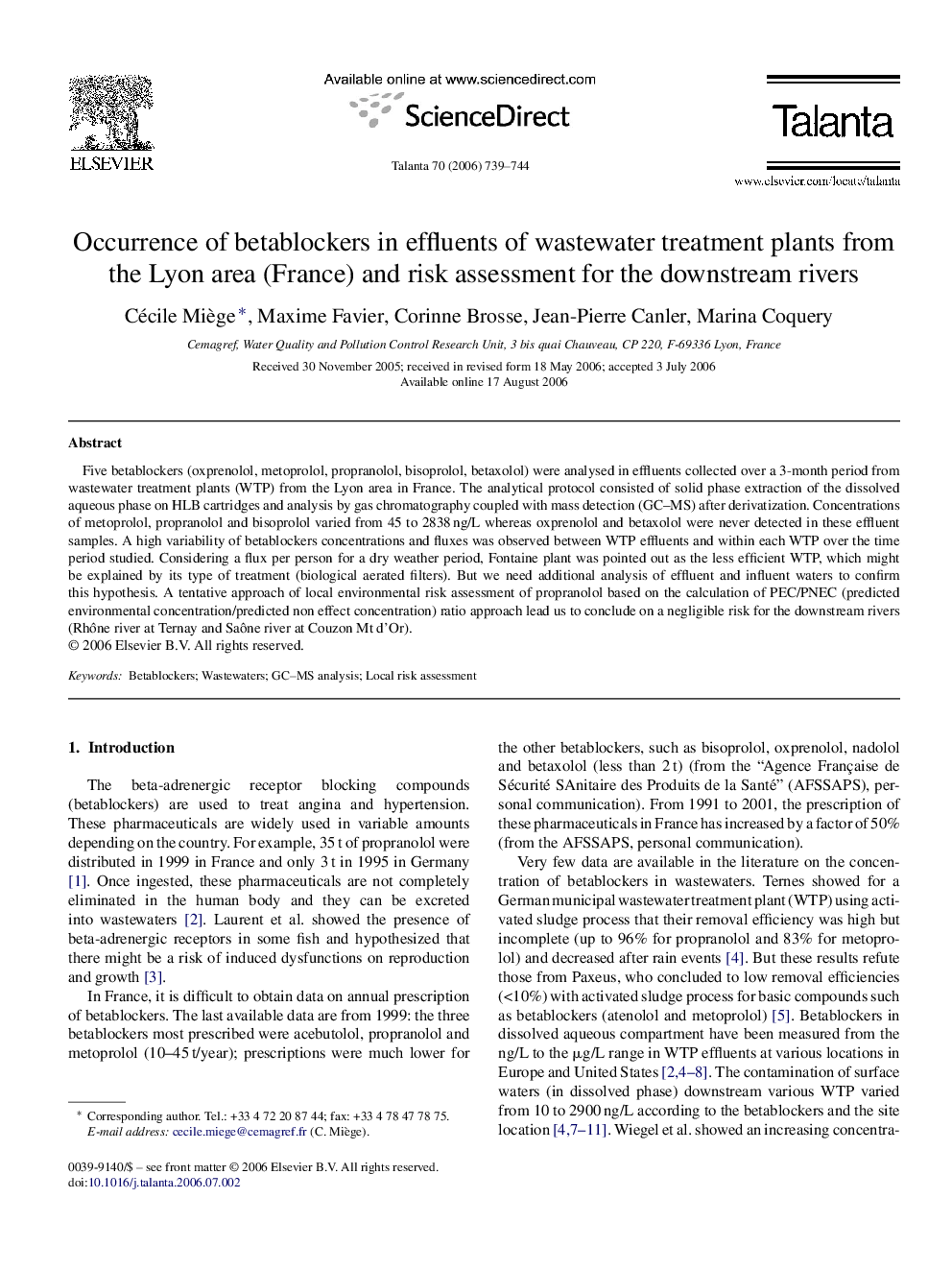| Article ID | Journal | Published Year | Pages | File Type |
|---|---|---|---|---|
| 1246291 | Talanta | 2006 | 6 Pages |
Five betablockers (oxprenolol, metoprolol, propranolol, bisoprolol, betaxolol) were analysed in effluents collected over a 3-month period from wastewater treatment plants (WTP) from the Lyon area in France. The analytical protocol consisted of solid phase extraction of the dissolved aqueous phase on HLB cartridges and analysis by gas chromatography coupled with mass detection (GC–MS) after derivatization. Concentrations of metoprolol, propranolol and bisoprolol varied from 45 to 2838 ng/L whereas oxprenolol and betaxolol were never detected in these effluent samples. A high variability of betablockers concentrations and fluxes was observed between WTP effluents and within each WTP over the time period studied. Considering a flux per person for a dry weather period, Fontaine plant was pointed out as the less efficient WTP, which might be explained by its type of treatment (biological aerated filters). But we need additional analysis of effluent and influent waters to confirm this hypothesis. A tentative approach of local environmental risk assessment of propranolol based on the calculation of PEC/PNEC (predicted environmental concentration/predicted non effect concentration) ratio approach lead us to conclude on a negligible risk for the downstream rivers (Rhône river at Ternay and Saône river at Couzon Mt d’Or).
